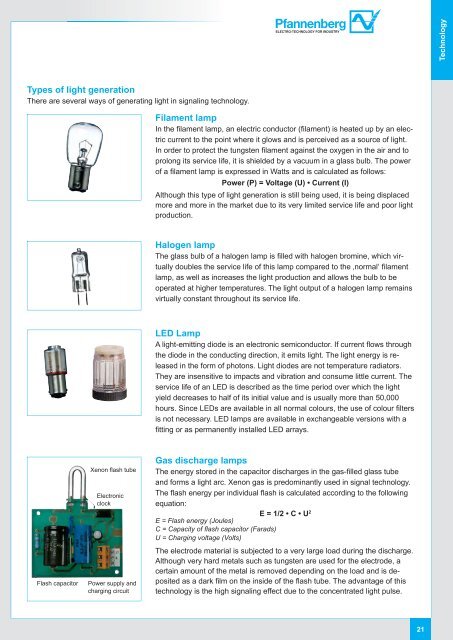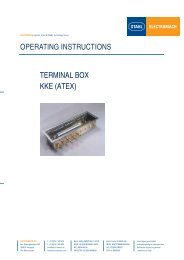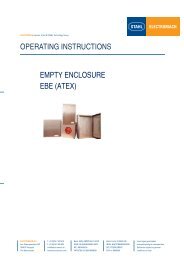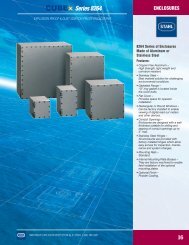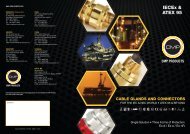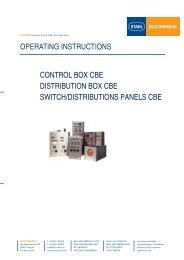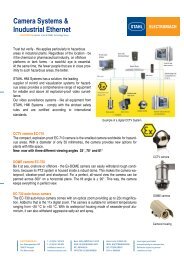You also want an ePaper? Increase the reach of your titles
YUMPU automatically turns print PDFs into web optimized ePapers that Google loves.
ELECTRO-TECHNOLOGY FOR INDUSTRY<br />
Technology<br />
Types of light generation<br />
There are several ways of generating light in signaling technology.<br />
Filament lamp<br />
In the filament lamp, an electric conductor (fi lament) is heated up by an electric<br />
current to the point where it glows and is perceived as a source of light.<br />
In order to protect the tungsten filament against the oxygen in the air and to<br />
prolong its service life, it is shielded by a vacuum in a glass bulb. The power<br />
of a fi lament lamp is expressed in Watts and is calculated as follows:<br />
Power (P) = Voltage (U) • Current (I)<br />
Although this type of light generation is still being used, it is being displaced<br />
more and more in the market due to its very limited service life and poor light<br />
production.<br />
Halogen lamp<br />
The glass bulb of a halogen lamp is fi lled with halogen bromine, which virtually<br />
doubles the service life of this lamp compared to the ‚normal‘ fi lament<br />
lamp, as well as increases the light production and allows the bulb to be<br />
operated at higher temperatures. The light output of a halogen lamp remains<br />
virtually constant throughout its service life.<br />
LED Lamp<br />
A light-emitting diode is an electronic semiconductor. If current fl ows through<br />
the diode in the conducting direction, it emits light. The light energy is released<br />
in the form of photons. Light diodes are not temperature radiators.<br />
They are insensitive to impacts and vibration and consume little current. The<br />
service life of an LED is described as the time period over which the light<br />
yield decreases to half of its initial value and is usually more than 50,000<br />
hours. Since LEDs are available in all normal colours, the use of colour fi lters<br />
is not necessary. LED lamps are available in exchangeable versions with a<br />
fi tting or as permanently installed LED arrays.<br />
Flash capacitor<br />
Xenon flash tube<br />
Electronic<br />
clock<br />
Power supply and<br />
charging circuit<br />
Gas discharge lamps<br />
The energy stored in the capacitor discharges in the gas-filled glass tube<br />
and forms a light arc. Xenon gas is predominantly used in signal technology.<br />
The flash energy per individual flash is calculated according to the following<br />
equation:<br />
E = 1/2 • C • U 2<br />
E = Flash energy (Joules)<br />
C = Capacity of flash capacitor (Farads)<br />
U = Charging voltage (Volts)<br />
The electrode material is subjected to a very large load during the discharge.<br />
Although very hard metals such as tungsten are used for the electrode, a<br />
certain amount of the metal is removed depending on the load and is deposited<br />
as a dark fi lm on the inside of the fl ash tube. The advantage of this<br />
technology is the high signaling effect due to the concentrated light pulse.<br />
21


